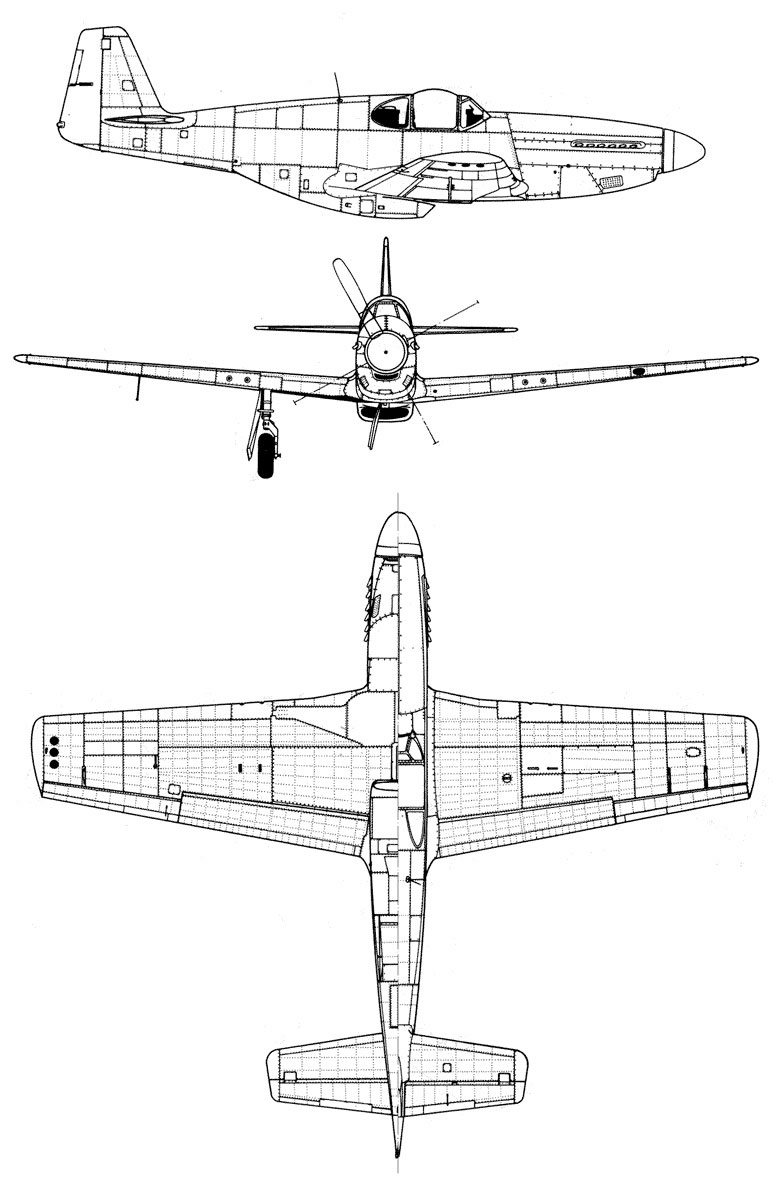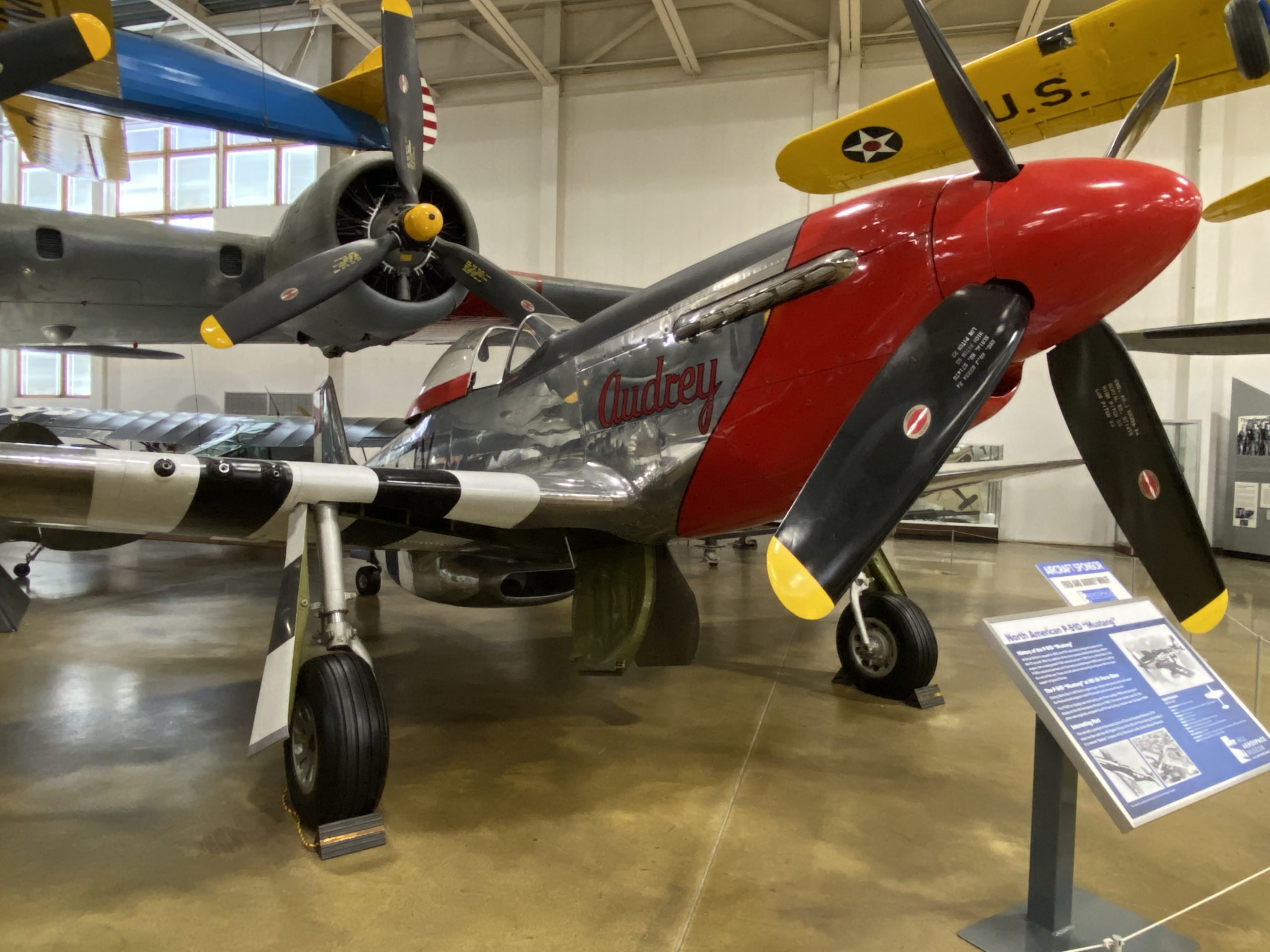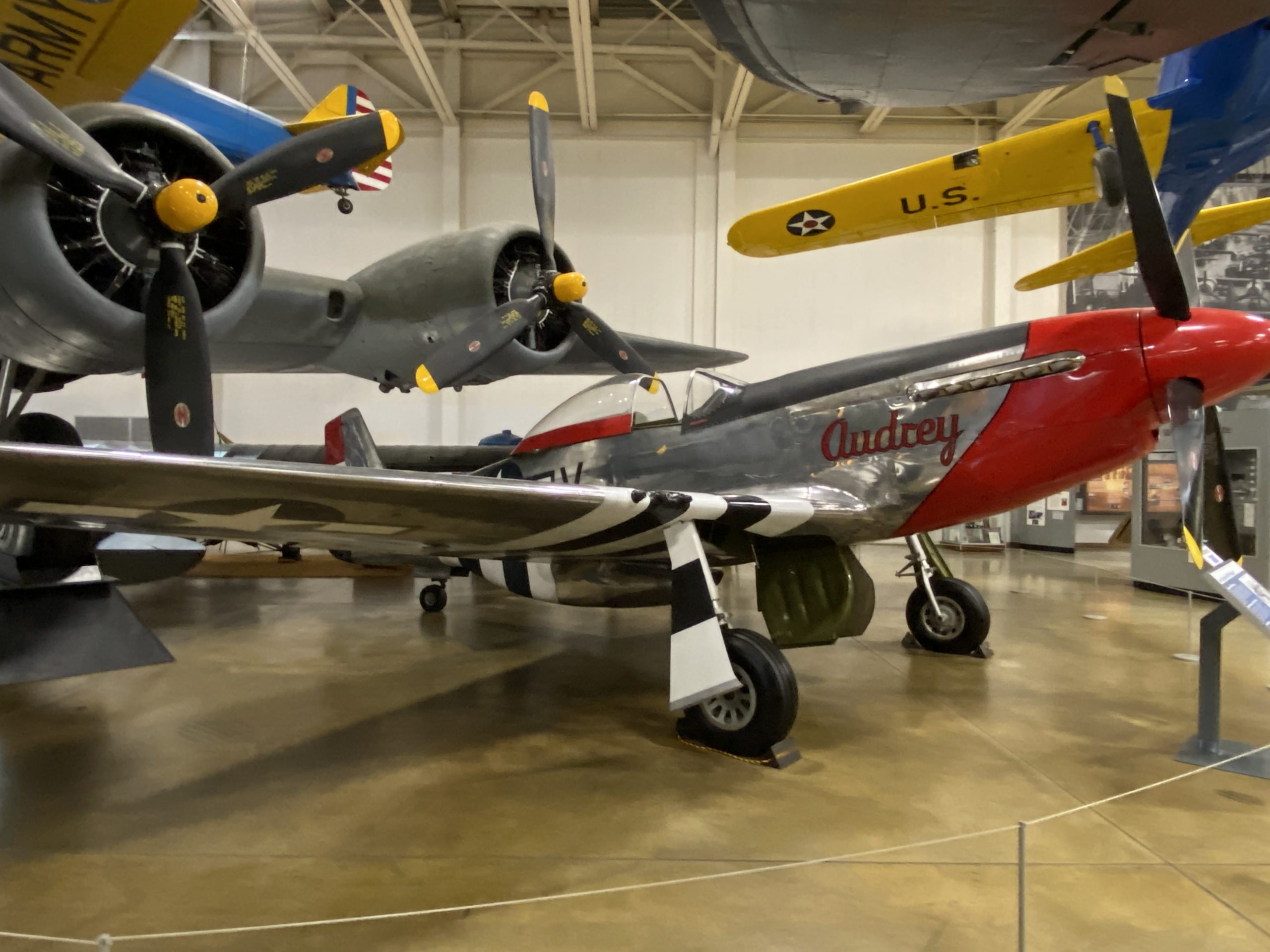
North American P-51D Mustang
Serial Number: 44-13371
Manufacturer: North American Aviation
Crew: One
Engines: One Rolls Royce (Packard) Merlin V-1650-7; 1,720 horsepower
Wingspan: 37 feet 5/16 inches
Length: 32 feet 3 5/16 inches
Height: 8 feet 8 inches
Weight: 6,585 pounds (empty); 11,054 pounds (maximum)
Speed: 437 mph at 25,000 feet (maximum)
Range: 1,000 miles with 2 drop tanks (combat); 1,600 miles (ferry)
Service Ceiling: 42,000 feet
Armament: Six .50-caliber machine guns and ten 5-inch rockets or 2,000 pounds of bombs
Cost: $51,572 (average P-51 cost per unit as of 1944)




